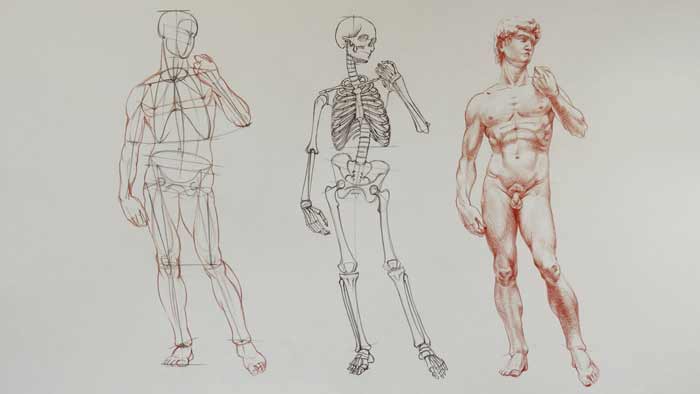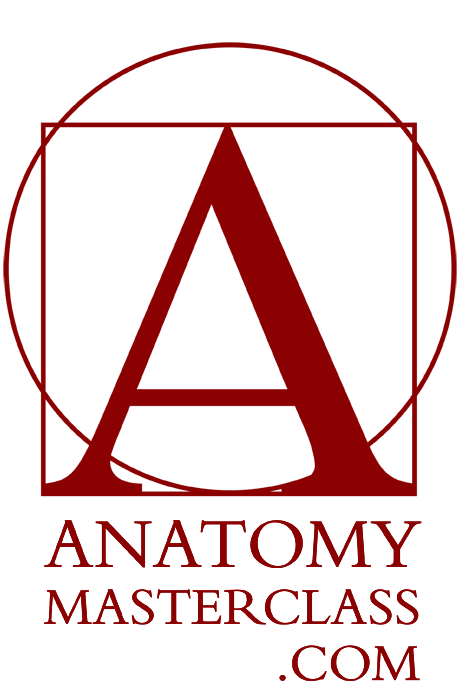How to Draw a Man
How to Draw a Man
Anatomy Lesson 20 – Part 3
In this video lesson, you will discover how to draw a man.
How to Draw a Man
We will continue with the same model, Michelangelo’s David.
In the previous two videos, you learned how to construct a figure in contrapposto, as well as about the skeletal anatomy of the human body. It is time to explain how to draw a man.
As before, I have marked the top and bottom edges of the standing figure.
The figure’s height has been divided into eight equal parts. The top part is occupied by the head.
A virtual line can be drawn between the nipples on the male chest – one-fourth of the way down from the top of the figure.
When considering how to draw a man with correct proportions, you can double check the following ratio by comparing the distance between the nipple line and the lower jaw, which should be the same as the height of the head.

Now, I will say a few words about how to draw a man with the knowledge of major muscles that every figurative fine artist must know.
The shape of the chest is influenced by the pectoralis major muscle, which is the chest muscle.
The abdominal part of the torso is covered by the six-pack muscle, which originates at the pubic bone and runs into the lower part of the ribcage and the breastbone.
The flank pads of the external oblique muscle provide the outline of the torso just above the pelvis.
The tailor’s muscle, which originates from the frontal top edge of the pelvis and spirals down until it reaches into the top-inner edge of the shinbone, gives the upper leg its characteristic contour.
The inner half of the upper leg has an outline that describes the edge of the adductor muscles. This muscular group pulls the thigh towards the middle line of the body.
The outermost outline of the hip and thigh is described by several muscles, including the gluteus medius, which originates at the top border of the pelvis and runs down into the upper edge of the thighbone, as well as the portion of the quadriceps muscle that occupies the majority of the front of the upper leg.
The width of the knee is defined by the condyles of the upper leg bone and the top part of the shinbone.
There are two landmarks particular to the knee that you have to include in your drawing – the kneecap and the tibial tuberosity on the shinbone.
The calf muscles define the width of the lower leg.
At the ankle joint, the shinbone ends slightly higher than the calf bone, which makes the inner anklebone higher than the outer one.
The biceps brachii muscle occupies the front portion of the upper arm. It has two heads, which originate at the shoulder blade and insert into the upper part of the forearm bones. The main function of this muscle is to flex the forearm.
The lower arm has two main groups of muscles: the flexors and the extensors. These muscles can rotate together with radius bone, which runs alongside the elbow bone.
In the pronation position, the radius crosses the elbow bone from above. In the supination position, these two bones are parallel to each other.
In this drawing, you can see that David’s right forearm is in the pronation position, while his left arm is in supination position.
When drawing the foot, remember one helpful rule: the line of the heel is pointing into the little toe…
[ The full lesson is avaibale to Anatomy Master Class members ]
To learn more about how to draw a man, enroll in the Anatomy Master Class
Simple Pricing, No Surprises
One-time payment - Only $97 USD
ENROLL NOW



